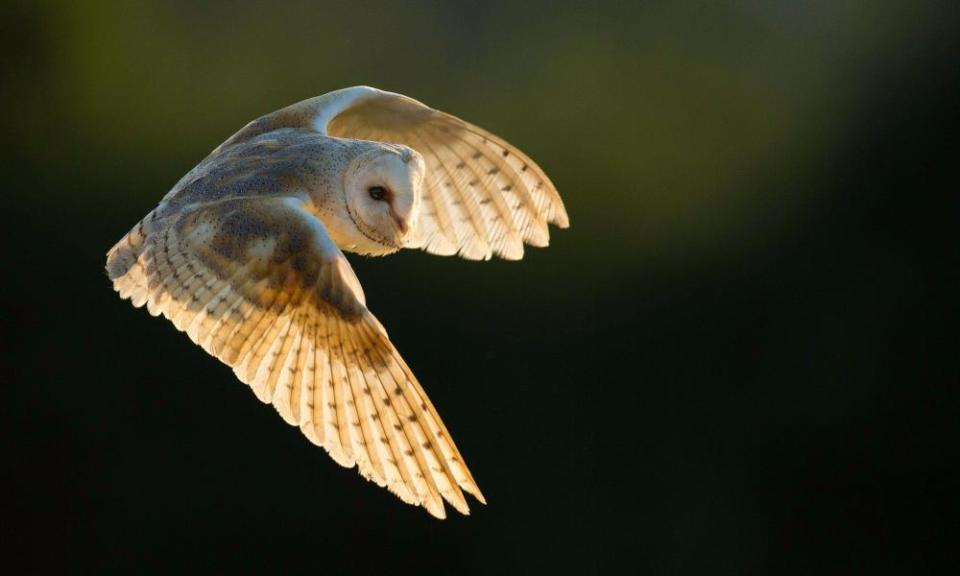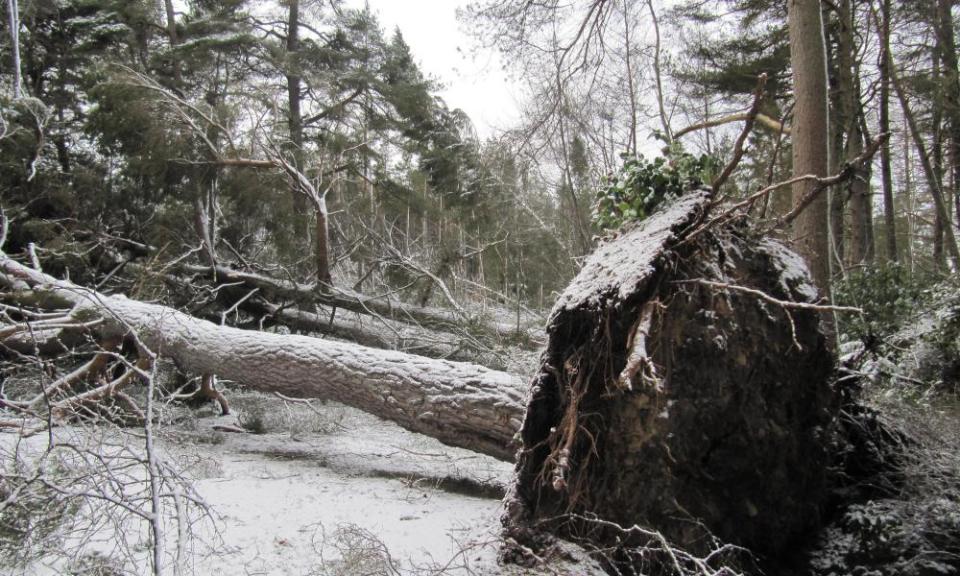Country diary: Storm Arwen battered the valley, but the barn owl survives

Allendale, Northumberland: It is small relief that, for all the damage done, the owl is still gliding
It was back in September at dusk, a time of uncertain light, that I thought I saw a white bird. In that fine autumn, there followed other evenings of gardening late, but it was several weeks before I saw it again. A barn owl flying low across the field, working the ground with efficiency as it quartered the long grass; I hadn’t imagined it.
The variety of habitats in the valley makes for good hunting, a mixture of wood pasture, tufty grasses and marsh. This rough land provides cover for small mammals and in particular field voles, a barn owl’s main diet. Since that first time, the owl has become a regular, recorded in my notebook morning and evening, a pale floating shape, backlit as dawn comes over the hill, wings tinged apricot as the sun sets.
Related: Country diary: a pheasant can take care of itself
Barn owls are crepuscular birds, so the short winter days give a greater chance of seeing one. Their soft, silent feathers have little waterproofing and they rely on hearing to locate their prey; on wet, windy nights they go hungry. One ear set higher than the other enables them to pinpoint sound.
The owl hovered low, feathered legs dangling, claws folded, before dropping into the long grass by the river. It lifted off again, gripping a vole, and took it to a half hidden spot in the lee of a conifer wood. Mantling its prey, it tugged for five minutes before peering round with a ruffle of feathers and flying into the dark trees. One morning there were two barn owls circling each other, hinting at possibilities for next year.

I looked for the owl the day after Storm Arwen. All around the valley, roads were blocked by fallen trees and many people had no electricity or water. Gales of nearly 100mph had been recorded in Northumberland. I hoped it had hunkered down in some barn or hollow tree.
A relief, then, to see it glide over a field patchy with snow, its cream and golden-buff wings matching a landscape now white with straw-coloured grasses. I stood under the crook of a hawthorn watching. The barn owl had survived the first major storm of winter.
• Country Diary is on Twitter at @gdncountrydiary

 Yahoo Finance
Yahoo Finance 